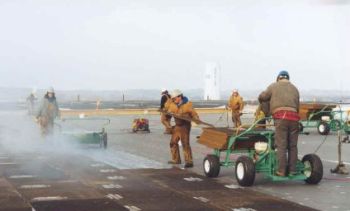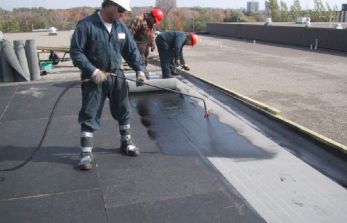Call Us
1-866-968-0479Built-up Roofing (or BUR) is the most popular choice of roofing used on commercial, industrial and institutional buildings. BUR is used on flat or low-sloped roofs and consists of multiple layers of bitumen and ply sheets.

Built-up roofing systems have had a long-standing popularity, due in large part to its success and proven reliability. The number of 20, 30 and 40-year-old BUR roofs still in excellent condition attests to this fact. Specifically, BUR roofs offer:
At the heart of this roofing system is the roofing membrane, which consists of roofing bitumen and multiple reinforcing plies of roofing felt.
Roofing bitumen is the primary adhesion/waterproofing agent used between roofing plies. Bitumen arrives at the job site in solid form, but is heated and applied as a liquid. Roofing bitumens may be either a product of petroleum refining (asphalts) or a product of the coal-cooking process (coal tar pitch).
Multiple reinforcing “plies” are asphalt-coated roofing sheets or felts installed in three or more layers to strengthen and stabilize the BUR membrane.
BUR roofing membranes can be protected from solar radiation by embedding gravel in the bitumen, applying a surface coating or applying a granular-surfaced “cap” sheet. Light-colored surfacing materials can be used to reflect heat from the building. In addition, surfacing agents can provide additional fire protection.
